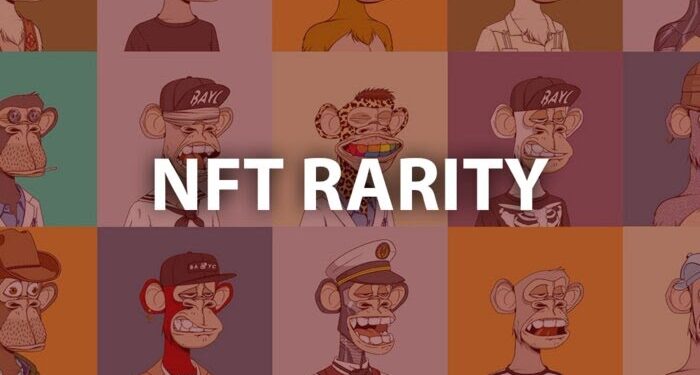Non-Fungible Tokens (NFTs) have taken the digital world by storm, revolutionizing the way we perceive and trade digital assets. At the heart of this phenomenon lies the concept of rarity, an important factor that determines the value and uniqueness of an NFT. In this article, we delve into the intricacies of NFT rarity and explore the methods to calculate it.
Understanding NFT Rarity
Rarity in the context of NFTs refers to the scarcity of a particular digital asset within a collection. Unlike traditional art or collectibles, where physical constraints dictate scarcity, NFT rarity is purely digital and often algorithmically defined. The rarity of an NFT can be attributed to various factors, including limited editions, unique attributes, or special characteristics embedded in the digital file.
- Limited Editions: Many NFT collections release a predefined number of editions for each digital asset. For instance, an artist might decide to mint only 100 copies of a specific artwork. The fewer the editions available, the rarer the NFT becomes, contributing to its perceived value.
- Unique Attributes: Some NFTs derive rarity from unique traits or attributes assigned to them. These traits can be aesthetic elements, such as color variations, or more complex features like interactive components within the digital file. Collectors often seek NFTs with distinctive attributes, enhancing their rarity.
- Special Characteristics: Certain NFTs gain rarity through special characteristics, such as being the first item in a collection, having historical significance, or being associated with a significant event. These unique features contribute to the overall rarity and desirability of the digital asset.
Calculating NFT Rarity
Quantifying the rarity of an NFT involves a combination of subjective and objective factors. While some aspects are easily quantifiable, others rely on the community’s perception and preferences. Here’s a breakdown of how to calculate NFT rarity:
- Edition Size: The simplest factor to consider is the edition size. If an NFT has a limited edition of, for example, 10 copies, it is inherently rarer than one with an edition size of 1,000. Collectors often gravitate towards smaller edition sizes due to their exclusivity.
- Attributes and Traits: Assessing the rarity based on attributes requires a closer look at the unique characteristics of an NFT. A rare attribute, like a distinct color combination or a special animation, can significantly enhance the overall rarity score. The more distinctive the attributes, the higher the rarity.
- Community Demand: The perception of rarity is heavily influenced by community demand. Monitoring discussions on social media platforms, forums, and marketplaces can provide insights into the perceived rarity of an NFT within the community. Popular demand often translates into increased rarity and value.
- Historical Significance: NFTs associated with historical events or milestones within the blockchain space can gain intrinsic rarity. For instance, being the first NFT minted on a platform or linked to a groundbreaking moment can contribute to its historical rarity.
- Smart Contract Analysis: For those with technical expertise, delving into the smart contract of an NFT collection can reveal additional insights. Understanding the algorithms governing traits, editions, and other attributes can provide a more nuanced understanding of an NFT’s rarity.
Tools for Rarity Calculation
Several tools and platforms have emerged to simplify the process of calculating NFT rarity. These platforms often aggregate data, including edition sizes, attributes, and historical sales, to provide a comprehensive rarity score for each digital asset. Notable examples include Rarity Tools, Rarity Sniper, and Rarity Analyzer.
These tools typically analyze metadata, transaction history, and community interactions to generate a rarity score that collectors can use as a reference. However, it’s important to note that these scores are not absolute, as rarity remains a subjective concept influenced by individual preferences.
Conclusion
NFT rarity lies at the core of the digital collectibles market, shaping the value and desirability of these unique assets. Whether it’s through limited editions, unique attributes, or special characteristics, the rarity of an NFT adds a layer of complexity and intrigue to the burgeoning world of digital art and collectibles.
Calculating NFT rarity involves a combination of quantitative analysis, community sentiment, and an appreciation for the unique features embedded in each digital asset. As the NFT space continues to expand, so too will the methods and tools available for collectors and enthusiasts to decipher the intricate tapestry of rarity within the digital realm.










